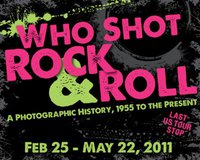The theater was Drayton Hall in Wardlaw College. I had no idea how big the theater was because I had never been in it before. There ceilings were very high and there was a lot of seating in a stadium feel. The stage was set up so that everyone in the theater could see every part of the stage. The set was decorated elaborately and looked like an actual place and not a scene. The actors moved around the stage and the lighting hit different areas as needed to change the location of the actors. There were props that helped with defining the place the actors were during certain scenes such as tables and chairs. The set never changed, it was just moved around to show the audience that the actors were in different places. The set consisted of a café area, houses with balconies, a church, and even streets with a fruit stand. The costumes were extremely colorful and put together well. I really enjoyed the bright colors and the details on each costume. The costumes set up the play for me as a comedy because of the colorful and funny wigs, accessories, and playful clothing.
The Comedy of Errors takes place in the late 1500’s. The play is said to be able to set anywhere between 1589 and 1595. The author is William Shakespeare and this is one of his earliest plays as well as one of his shortest plays. This play has been adapted for opera, stage, screen and musical theatre and was not written until the later part of 1594. William Shakespeare lived in the late 1500s to the early 1600s. His exact dates range from 1564 to 1616. He was an English poet and playwright. He was born and raised in Stratford-upon-Avon. Shakespeare lived during the Elizabethan period in England.
Comedy of Errors starts by introducing two sets of identical twins. These twins are accidentally separated at birth. Antipholus and Dromio both of Syracuse arrive in Ephesus which is also the home of both of their twin brothers, Antipholus and Dromio both of Ephesus. Both Dromio’s are servants to both Antipholus. The majority of the play consists of the Syracusans encountering the families and friends of their twins. They are mistaken as their twins and there is a series of entertaining mishaps because of their mistaken identities. Egeon is looking for his twin sons that he purchased twin sons for. He is caught and will be executed if he does not pay a one thousand dollar fine. He is looking for his wife who was rescued along with one son and one slave after being hit by a tempest on a sea voyage. They were separated and rescued by different boats. The slave and son that was with Egeon are now older and on a search for their twin brothers. This is when they arrive in Ephesus and all of the wild mishaps occur. In the end, Emilia, Egeon’s wife, turns out to be the Abbess. Everyone begins to understand the day’s events when the twins are introduced and the confusion is explained.

























